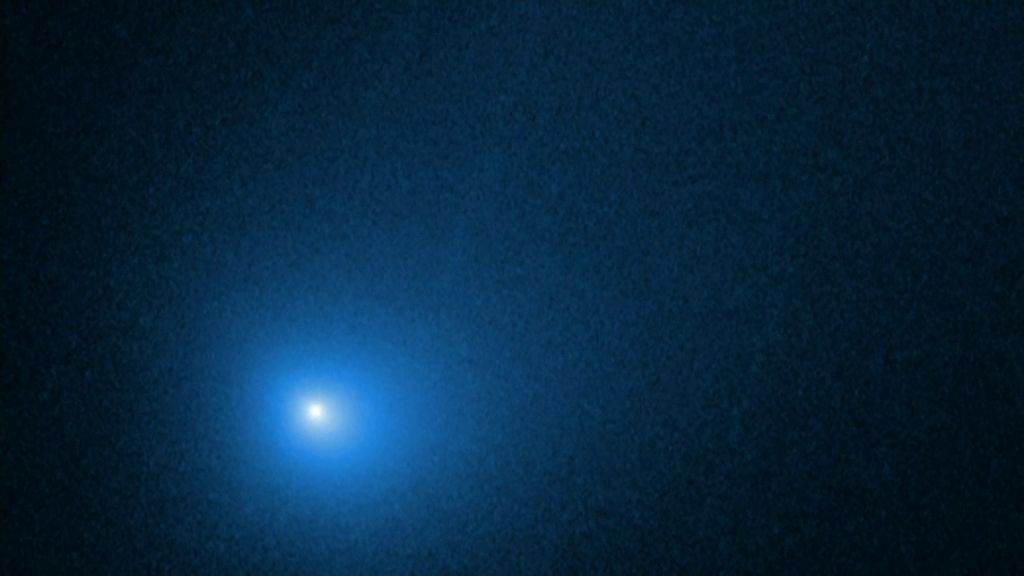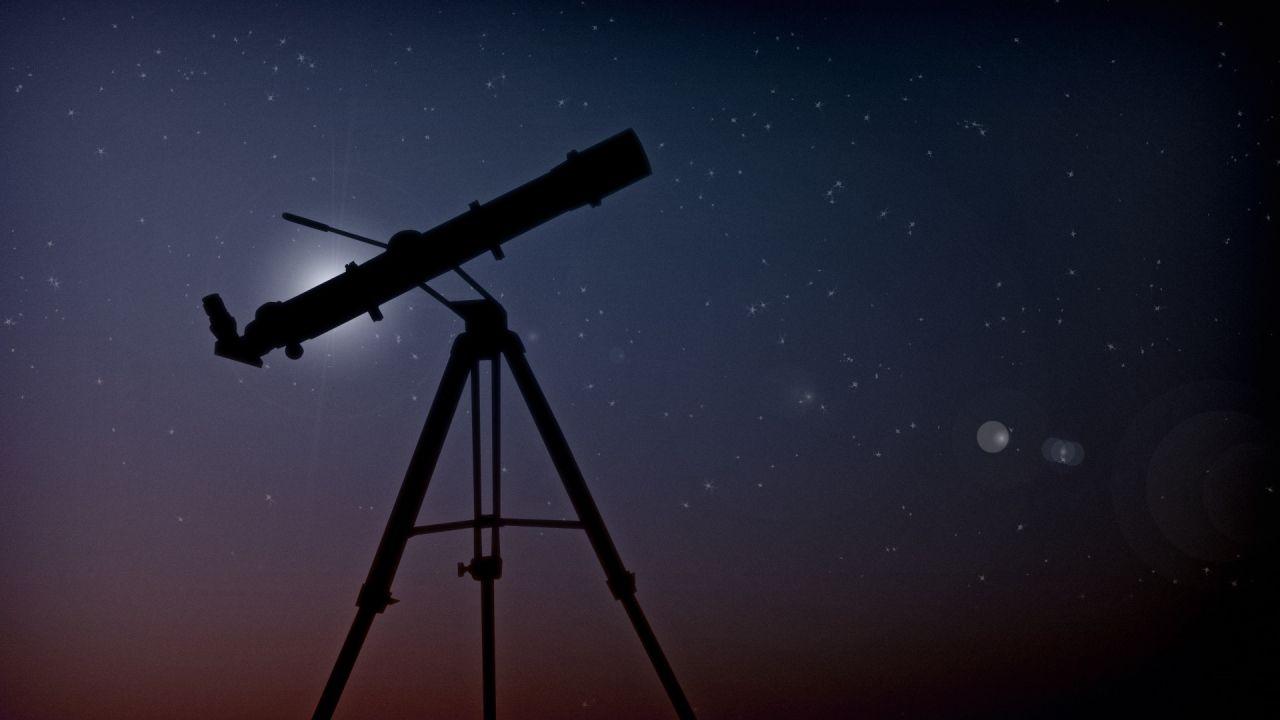AUSTIN, Texas -- About an hour after sunset, go outside and look to the northwestern horizon and you might see a celestial traveler in the heavens above.
It's a comet called NEOWISE and it's on a once-in-our-lifetime journey around our sun.
Fortunately, NEOWISE didn't burn up completely when it made its closest approach to our star on July 3. Since then, a brilliant cometary tail has become more prominent in the early morning and, now, nighttime skies.
The nearly three-mile-wide comet is believed to have formed at the birth of our solar system around 4.5 billion years ago, and we will likely be able to see it throughout the month of July.
In the above video, Adam Kraus, an associate professor of astronomy at the University of Texas at Austin, tells our Chief Meteorologist Burton Fitzsimmons that NEOWISE is the best comet sighting in 23 years, and might end up being the best of this decade.
Be sure to take a look. And, if you're able to snap a picture from your neck of the woods, we'd love to see it. You can email us at txphotos@charter.com.
See transcript below.
BF: Joining us now Associate Professor of astronomy at UT Austin. Dr. Adam Kraus here to talk about comet NEOWISE. Thank you for being with us.
AK: Glad to be here.
BF: We have just really been treated. I've been sharing loads of photos of comet NEOWISE around the globe, and it's only gotten better. Talk to us about this visitor.
AK: Yeah, so this is a comet that's visiting from the outer part of the solar system. And it only visits the inner solar system every several thousand years, about 7000 years. That's its orbital period. And then when it passes close to the sun, it gets warmed up. That was, in ice form, leftovers from the start of the solar system -- it vaporizes and will be emitted from the comet. And then we see that as this really bright tail.
BF: So are we thinking this is literally a 4.6 billion year old comet?
AK: Yeah, that's the understanding of their leftover primordial building blocks from when the planets were being assembled. And something didn't get incorporated into the planets, and was left as debris scattered throughout various nooks and crannies of the solar system.
BF: So the folks know, this was discovered only in March, late March by NASA with what's called the Near Earth object wide field, infrared survey explorer. And that's where the word NEOWISE comes from. So one pass, that's all we're going to get in our lifetime, and it was closest to the sun right before Independence Day. What is it doing now? Is it moving away from the sun at this point?
AK: Yeah, so now it's receding away from the sun. And so because it's bright to reflect the sunlight, then it getting feignter to most observers, often random direction. But fortunately for us, it's also passing relatively close to the earth. Not collision close. I think it's about 10 million kilometers at our point of closest approach. But that means it's actually staying bright for us for most of July. So it should make for a good viewing as it's moving further away from the sun and continued easier to see at nighttime. Because it's only been visible at very, very close to the sunrise and sunset up until now. For the next several weeks, we should have a great show.
BF: I'm reading the comet NEOWISE is estimated to be about three miles wide. So this is a very large chunk of a dirty snowball, if you will. Does it come from what's known as the Oort cloud, that place far away in our solar system where comets kind of gravitate?
AK: Yeah, so that's the understanding based on the mapping of its orbit that's been done so far, it looks like it fell in from very far outside the orbit of any of the planets or any of the Kuiper belt which is the other common place that comets come from but this is just outside the orbit of Neptune and Pluto. The Oort cloud is much further out, thousands to 10s of thousands of times the Earth's orbital radius away from the sun. And every once in a while some body that's on a trajectory to fall inward and make the close pass by the sun, then starts the long trip back out, and probably does that a few times, gradually evaporating away until eventually, the whole thing gets fragile enough that it just breaks apart in, which has happened in the past. The last few comets that we hoped would be visible if they didn't survive their passage in close to the sun, but this one did, which we couldn't predict until it had already done it. So that's why a big thing just relatively recently, to realize, wait a minute, this actually will be a really good show for the year and really for the decade probably. Wow.
BF: So is this a surprise for astronomers?
AK: If we can tell when a comet is on the way in that it has the potential based on estimates of its size. How close of an approach if we think that it will make many passes by the sun or not, and do those kinds of things we can learn by observing comets as they're on their way in. So we there are researchers at UT McDonald Observatory who I would bet probably observe it before it approached the sun, they probably could have told us a lot about it and said yes, this one has potential and then we just have to wait and see if it doesn't make it through or break up like several other comets from the past year or so. But this one looks like a major comet and now is on its way back out, and still producing the really great looking tail that we'll be able to see for most of the rest of July.
BF: I remember as a kid watching for Halley's Comet and Hale-Bopp. Those were some of the real big shows. How does this one compare?
AK: So I don't know that it's gonna end up being quite as spectacular as either of those. At least as far as my memory goes, this is going to be one of the best. So 23 years and counting since the last really bright one like this, which I remember going out and watching in the backyard too. So this is great for go be an amateur astronomer and look at that size and actually see something that's changing, like every night even.
BF: Yeah, it's evolving. It's growing. It's kind of doing its own thing organically. And what's been great is I know. Initially, it was more of a binocular kind of view, and now it's just a total naked eye view. And you said 23 years or so since we've had one like this?
AK: Yeah, I I can't think of any since Hale Bopp that has been this easy to just go outside and pick out and I would bet over this week, it'll probably be easier for people to go outside and see it. But until now, it's been pretty close to the horizon. And I tried going out and seeing it Sunday night, but I think there were some clouds on the horizon that kept me from seeing it until it upset just in the half hour after sunset. But now it's rising higher in the sky and staying visible longer after dark. And so people now should be able to see it, certainly with binoculars very easily to point it out. But then once you know approximately where to look. So there are there are apps you can install that will you don't wave your phone around, it'll tell you where it's at on the site, and they just look at your phone and try to pick it out. But it should be pretty straightforward. For a while now.
BF: Well, any reason to get people to look up is a good thing as far as I'm concerned, especially when you do it at night when it's not as hot as these blistering days. But while I have you with us if you don't mind answering this, we've got kind of something cool going on this month: three launches to Mars. There's a window, a very tiny window every 26 months, every two years, where Earth and Mars are going to be close enough. Talk to us about that and the importance of NASA's new Perseverance Mars rover.
AK: Yeah, and so the importance of launching them now is, as you said, then, if you want to launch on a relatively low energy requirement orbit, and so not needing a really, really big rocket, then we have these narrow windows where we can launch and they're passing each other such that you're sorry, just a little bit and they head toward the outer part of the solar system. And then they pass by Mars as it's going through. So if we missed this windows, then surely we have to wait until the next wave of launches can go two years later. Yeah. So launches have been going toward Mars, the ones that are going to go this time and really the ones we've been sending pretty regularly for the past several years, the past decade, are going to be important for this is like find out what was Mars like earlier this like, we'd really like to know, was there liquid water on there, we see geological features that may or may not actually relate back to having liquid water versus being produced. And otherwise, we'd really like to know even if the other planets our solar system filled with like the Earth right now, because they have in the past, so important for context on things like progress. How common are planets like the earth? Are they really everywhere in the universe? Or is the earth a very rare example. So all these sponsors are going to be very useful for finding out more about what Mars would like in the past and what it's like today.
BF: I was reading as many as 50. We've launched I believe, 56 individual missions to Mars yet 50% of them have failed. That just really hammers in that this is not an easy task.
AK: So sometimes you just get bad weather during every launch opportunity. So sometimes they'll just stop and say, okay, it didn't make it through this window, or if they do their final pre launch test...something that looks questionable, as you notice, then once you've been to another planet is not an easy task. And they've learned to be very, very cautious about if something's not behaving like us, but it's better to just wait and troubleshoot and double check that everything's working perfectly. And then if he wants later, well, the science still to come. And better to get it there two years later than to not at all. Because as you said, Yeah, a lot of missions have made it there and done great science. It won't happen for a wide variety of reasons.
BF: Dr. Kraus, that's some exciting stuff. We appreciate you talking with us about it today.
AK: Definitely.









